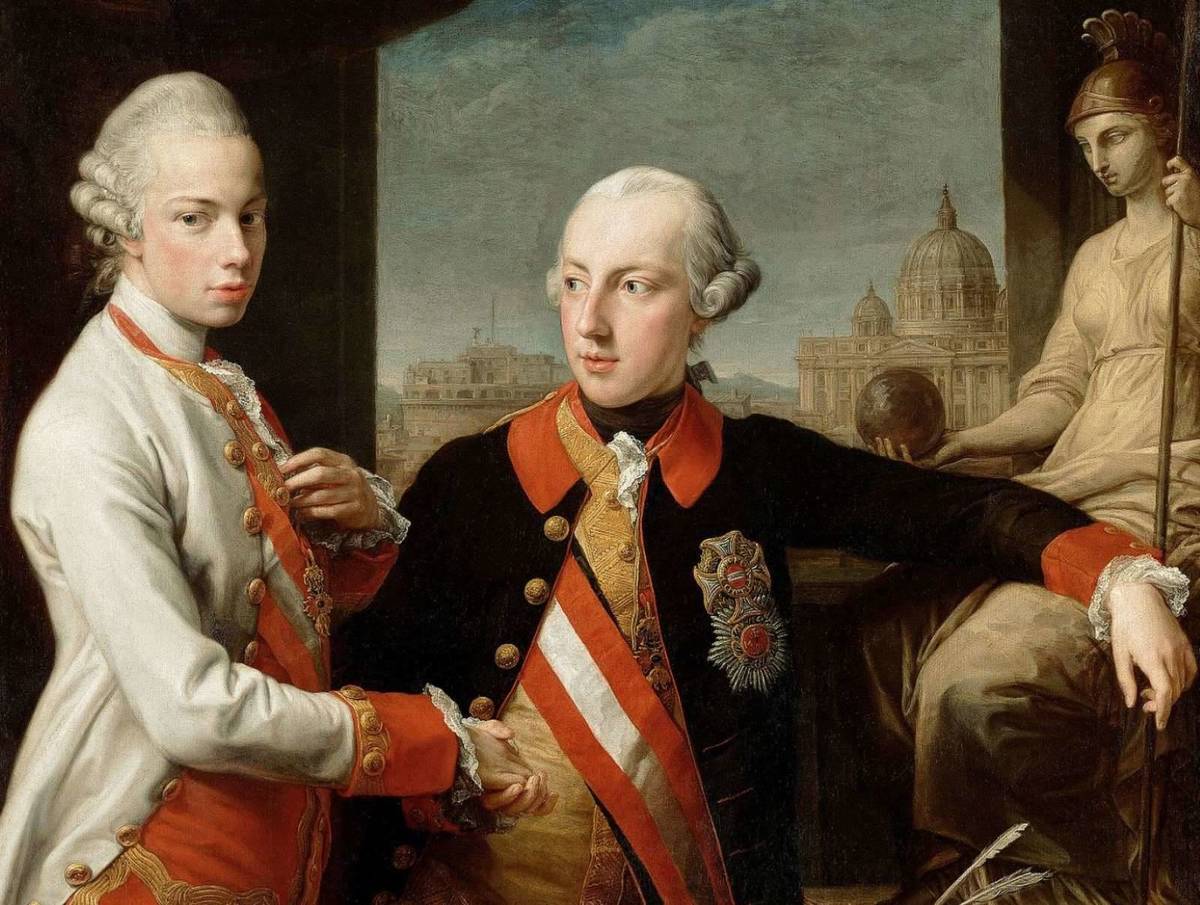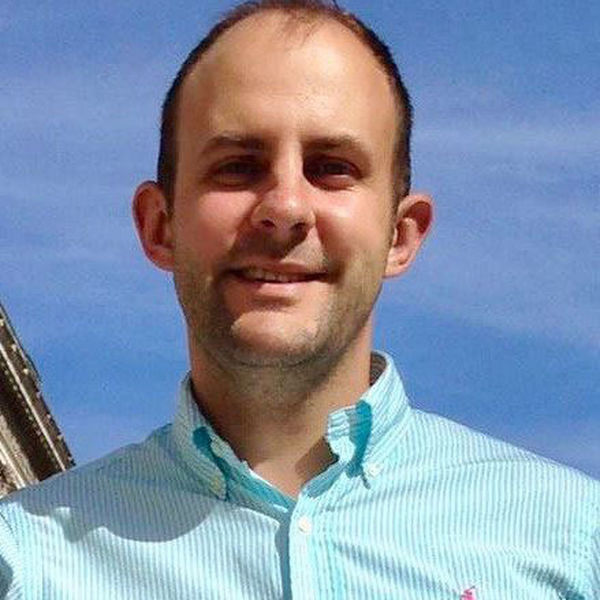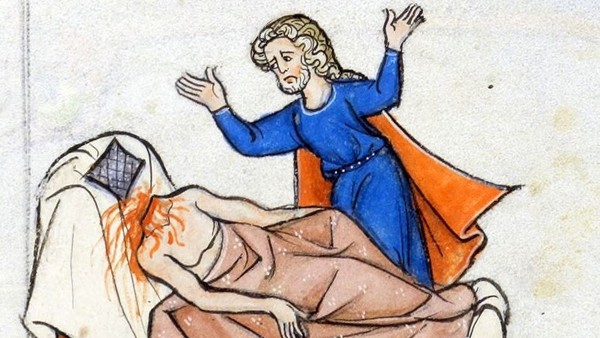Old myths die hard. Anyone who teaches political or Church history can probably relate to this adage better than most. Old myths are particularly tenacious when they support national, religious, or ideological identities. Tidy narratives about an imagined past give direction to present debates and commitments. In my case, teaching and writing about history and theology, I am continually struck by the power and persistence of the myth of a unitary and teleologically secularist Enlightenment.
For reasons that are in the end intriguingly similar—indeed, almost identical—two ends of a culture war spectrum are hesitant to give up simplistic narratives and neat binaries about religion, the Enlightenment, and the creation of modernity. For at least the last half-century, historical scholarship has recognized that the relationship between religion (including Roman Catholicism) and “the Enlightenment” was a deeply “entangled” and eclectic process.[1] Modernity did not emerge due to the clear (much less inevitable) triumph of a set of “secular” ideas over a set of “religious” ones.
The obvious significance of the French philosophes and pantheists like Spinoza notwithstanding, numerous “religious” Catholics, Protestants, and Jews, animated by their faith and their study, contributed to the multifarious process of Enlightenment in the long eighteenth century and the reform projects we associate with it. Pluralization of Enlightenment is now commonplace, and a “Catholic Enlightenment” is in fact one of the most established “religious enlightenments” in historical scholarship.
My experience teaching in academic and ecclesial contexts (and the experiences of many colleagues) has convinced me that, to put it mildly, these ideas are still locked up in ivory towers. I am relying not on any sociological data, but on admittedly personal and anecdotal observations for this claim, in the form of my own experiences (and those of many others) as a former undergrad and grad student in America and England, and now, for several years, teaching in traditional undergrad classrooms, with Catholic clergy candidates, and with adult education students. A reconfiguration of the relationship between religion and Enlightenment that is now widely accepted by scholars in the fields of Enlightenment studies, early modern history, and historical theology is still a shock to a large portion of engaged students—and this is by no means their fault.
It grates against two powerful narratives that have symbiotically leeched off one another, helping both survive well past their sell-by date. The first narrative is “progressive” and secularist and the second “conservative” and traditionally religious. Both, however, are thoroughly modern and driven by contemporary questions, concerns, and anxieties, not by any coherent account of the past.
Enlightenment as the Dispelling of Religious Darkness: The Stephen Pinker Narrative
The first narrative I encounter is an uncritical lionization of a (unitary) Enlightenment marked by reason, freedom, and progress. The target of this Enlightenment (the darkness that it supposedly freed humanity from) was of course religious, authoritarian worldviews characterized by superstition and intellectual and social backwardness. We could call this the “Stephen Pinker narrative” as a nod to a recent popularization.[2] In my experience, those who hold to this narrative are usually politically progressive and secularist, but very few hold it in an aggressive or inflexible way. Often, they seem to have picked it up by cultural osmosis; perhaps in some cases by secondary overview texts or past teachers.
This first narrative is just something “everybody knows”—everyone who cares to know anything about the Enlightenment or early modern Europe or America, anyway. A small but pugnacious minority who adopt this basic paradigm have an arsenal of talking points seemingly gleaned from a variety of spokesmen cruder than Pinker, for example, smug YouTube videos featuring Bill Maher or the diatribes of the late journalist Christopher Hitchens.
Many of these non-religious, secular, or anti-religious folks (often former Christians) are loath to consider the evidence that Christianity in general or the Catholic Church in particular could have had a positive role to play in the Age of Enlightenment or the creation of modernity. They usually, however, do not then take the step to uniformly condemn all contemporary manifestations of religion—they still see Pope Francis and Mother Theresa (contra Hitchens) as basically on the good side. Their interest in, and adherence to, this narrative has much less to do with study of the “Age of Enlightenment” than with competing narratives touching upon America’s past and, probably more crucially, the country’s future trajectory.
They are rightly skeptical of the notion that the United States was founded as a “Christian country” and that patriotism necessitates supporting a civil religion in the “God and guns” menagerie style of a Trump rally. As far as I can tell, the stock placed in this narrative is driven much less by what did or did not happen in 1776 and much more by anxieties raised by the political goals of evangelical Protestants or radical traditionalist Catholics, as well as by the contemporary and related threat of religious “fundamentalism,” real or imagined. “Fundamentalism,” in this narrative, is primarily conceived of as a conservative Christian problem at home—Q-vangelicals taking the cake for superstition and fanaticism—and feminist and LGBT-persecuting radical Islam abroad. Islam, I have learned from some adherents of this narrative, is particularly prone to fanaticism since they “did not have an Enlightenment”. Woe unto them!
Enlightenment and the Chain of Errors: The Catholic LARPer Narrative
The second narrative, held by some traditional religious folks, is a position ranging from deep suspicion to total rejection of the same (mythical) unitary Enlightenment that some progressive secularists laud. This traditionalist narrative casts “the Enlightenment” as the first or at least a pivotal link in a “chain of errors” that led from traditional religious societies (purportedly happier and better) to the modern moral and spiritual wasteland of “liberal,” “secular,” or “atheistic” modernity.[3] In its strongest form, such a narrative is a direct successor of post-1789 “intransigent” Catholicism that argued that everyone from radical philosophes to moderate enlightened Catholics were directly to blame for the guillotine, widespread skepticism, and the overthrow of the old order (there are Protestant versions of this “decline” myth as well, in which the Enlightenment does not seem to figure so prominently).
Americans rarely hold this kind of narrative in any ideologically pure manner—that is, it is normally at least partially alloyed to a patriotic American neo-conservatism or Trumpism, neither of which are particularly nostalgic for the Middle Ages, nor the monarchies of the ancien régime. Nevertheless, the basic contours of an originally Catholic and ultramontane counter-Revolutionary and counter-Enlightenment narrative of history are clearly present and even gaining ground in some corners of the internet, from which they seem to be seeping into some US Catholic seminary cultures and some small, conservative Catholic (and sometimes even Protestant) colleges.
This second narrative agrees with the first: Catholicism and Enlightenment were mortal foes, and thus Catholicism and the Enlightenment’s offspring, modern liberalism, are by nature mortal foes and must ever remain so. But rather than praising the lumières for casting out superstition and error, the second narrative flips the script: it was those so-called Lights who plunged the world into moral and spiritual darkness. The persistence of this narrative among many devout Catholics has virtually no support from mainstream Catholic theological and historical scholarship, which broadly coheres with a more nuanced and less triumphalist re-narration of Church history that has occurred at the highest levels of the Church, even from the pen of post-Vatican II popes including, and maybe especially, from Benedict XVI, a nuanced thinker so often unfairly tarred as a defensive triumphalist.[4]
Then again, as anyone can attest who has suffered through intellectually vapid and embarrassing homilies or lectures that recycle “chain of errors” or “cycle of decline” talking points, a counter-Revolutionary, “intransigent” nineteenth-century narrative of history has had a much longer afterlife in Catholic consciousness than many of the actual reactionary policies of Pius IX’s and Pius X’s pontificates, which have long since been abandoned, to the point where a great deal of their socio-political teaching would be unrecognizably obscurantist to the vast majority of practicing Catholics today.
The flipside of the second narrative is that it implies the existence, if not of a Golden Age then at least of a much happier one, before the Enlightenment; liberalism and secularism ruined everything. This is why I call this second narrative the “Catholic LARPer” to form a facetious ideal antithesis to the “Steven Pinker” narrative. For Catholic LARPing, the thirteenth century is usually the ticket—think Thomas Aquinas, Gothic cathedrals, and (reputedly) gallant knights on Crusade—but one cannot escape the impression that the real destination of this ideological DeLorean is the much more recent post-World War II past, albeit one imagined in just as mythical terms.
Conclusion
Of course, very few of my students, friends, and colleagues would strongly articulate a version of the first or second of these narratives (but the chosen few have, with stirring conviction). Nevertheless, in the last several years especially I see clues that my students have inculcated these two narratives in various ways, probably mostly unconsciously. I have paid special attention to this recently, since in the United States we are, of course, in a time of what seems like acute cultural, political, and ecclesial crisis. Under such conditions, highly charged discussions about our national past and our future tend to rage openly and, when they do not, they are stewing and bubbling just beneath the surface.
Teaching Catholicism in the Age of Enlightenment is a peculiarly difficult task, probably because the world of early modernity is so like and yet so unlike our own. Wading into the excitement and tumult of the late eighteenth century for the first time can feel a bit like a vivid dream that somehow still does not feel real. The challenge of strong preconceptions about this era, even if they are mostly implicitly held, makes the task of the teacher harder but also more rewarding.
Some who hold to the first narrative I outlined above might worry that seeing the clearly “religious” motivations of some of the reforms of enlightened Catholics like the Habsburg Emperor Joseph II in Vienna and his younger brother Peter Leopold, the Grand Duke of Tuscany—like granting religious toleration to Jews and Protestants, disbanding the Inquisition, and abolishing torture and the death penalty—threatens a narrative that sees modern values as the result of the triumph of secular “reason” over irrational and backward “religion” and authority. Or, examining the “religious” reasons why someone like Bishop John Carroll of Baltimore enthusiastically accepted the First Amendment could sound too close to the kind of Christian Nationalist whitewashing of American history that sees the Founding Fathers as modern right-wing Evangelicals.
On the other end of the spectrum, for my devoutly religious (usually Catholic) students, seeing the achievements of Catholics deeply at odds with the papacy (sometimes about issues which most Catholics take for granted today, like vernacular liturgy, Bible reading, or religious liberty), or the enthusiastic participation of some Catholics in the process of Enlightenment threatens monochrome and binary views of both Catholicism and the Enlightenment. Likewise, examining the ways in which Catholics and the Catholic Church were or were not open to “enlightened” science and critical historical scholarship (Copernicanism, Locke and Newton, critical studies of the lives of Catholic saints, Church history, and the Bible), or were praiseworthy or censurable in moral matters (the complexities of Catholic views on gender and slavery) reveals that, while the secularist myths about Catholic obscurantism rarely hold up, neither does the halcyon imagined past of popular Catholic apologetics.
[1] Jeffrey Burson, The Culture of Enlightening: Abbé Claude Yvon and the Entangled Emergence of the Enlightenment (Notre Dame, 2019).
[2] Stephen Pinker, Enlightenment Now: The Case for Reason, Science, Humanism, and Progress (London: Penguin Books, 2018).
[3] Most Catholic traditionalists who hold this kind of narrative would see the Protestant Reformation as the first link in this chain of decline. Idiosyncratic or more academic traditionalists might point to the conciliarist movement or to the “nominalist” intellectual traditions of the late Middle Ages. Such a conception, interestingly, begins the decline with “unorthodox” Catholics instead of Protestants, freemasons, Deists, or skeptics.
[4] See: Pope Benedict’s Christmas address to the College of Cardinals, 22 December 2005, in which the former pope offered a nuanced narrative of the last three hundred years. Comparison with much of the triumphalism of his nineteenth and early-twentieth-century predecessors is striking. This speech, given in Italian, is available in English translation online.


